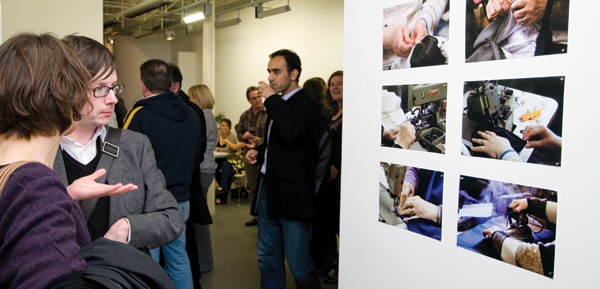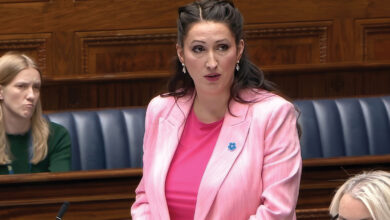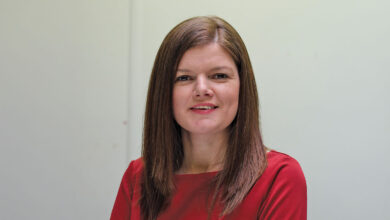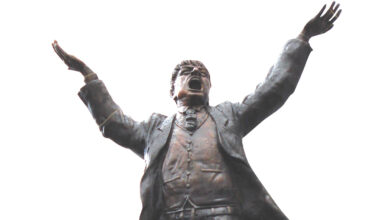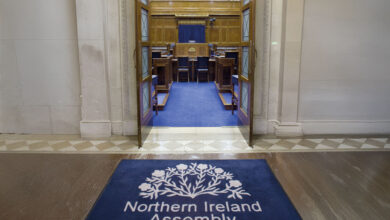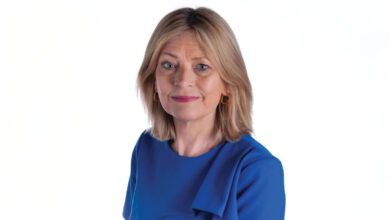Exposing real life in Belfast
Belfast Exposed was set up almost 30 years ago to help communities deal with political unrest and show the realities of living through the Troubles. Emma Blee visits to find out how the organisation has adapted over the years.
While some industries in Northern Ireland have been hit hard by the economic downturn, Belfast Exposed − the province’s only dedicated photography gallery − has actually been growing in popularity.
Described by its Director Pauline Hadaway as “one of Belfast’s best kept secrets”, the gallery was set up as a voluntary organisation in 1983 to allow local communities to come together and express their views on the political situation.
Located at Donegall Street, the building provides a venue for the exhibition of contemporary photography, digital archive browsing facilities, a spacious sepia photographic dark room and an eight-person Apple Mac digital suite.
The organisation was entirely voluntary for 16 years but in 1999 the Arts Council dedicated funding for a development plan and five members of staff. However, with many events and projects taking place each month, the gallery still relies heavily on volunteers.
Hadaway says the organisation was vital for communities during the Troubles: “It began because people were responding to the representation of the city in the mass media at the time and a lot of people were concerned about what they saw as misreporting, or the mass media not really representing the lived experience of people here.”
The main focus of the gallery was, and still is, the development and exhibition of community photography. “The founding photographers, who were largely amateur photographers in the city, called for work to be sent it by the public,” comments Hadaway.
She adds: “The exhibition was called Belfast Exposed; it showed another side of life in Northern Ireland. Yes, it showed the conflict and it showed the evidence of the soldiers and the streets with the scars of rioting, but it also showed peoples day-to-day lives from a different perspective.”
However, Hadaway says that while the political situation has changed over the years, Belfast Exposed has become no less important: “By 2000 we were post- Good Friday Agreement and everything had changed but here was this little organisation that was founded in 1983 at the height of the Troubles and it was still going.”
She adds: “It went on to become a photographers’ resource where it was generating issues such as unemployment and poor housing. People took on particular areas of interest, social and political, and used photography as a means of exploring that.”
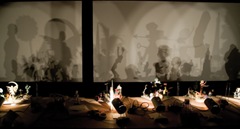 But with political unrest still causing problems in some areas of Belfast, Belfast Exposed has had to revisit some of its original aims. Hadaway explains: “Some of the communities that we work with are obviously struggling and still to this day feel marginalised. Our outreach photographer is working with mostly young men but also young women, in North Belfast. These are people that were caught up in events during the summer, rioting and so on, and are actually looking at the way that was represented in the press.”
But with political unrest still causing problems in some areas of Belfast, Belfast Exposed has had to revisit some of its original aims. Hadaway explains: “Some of the communities that we work with are obviously struggling and still to this day feel marginalised. Our outreach photographer is working with mostly young men but also young women, in North Belfast. These are people that were caught up in events during the summer, rioting and so on, and are actually looking at the way that was represented in the press.”
Belfast Exposed also showcases the work of local people as well as artists and photographers who are known on an international platform. Hadaway says that the economic downturn has actually had a positive impact on the number of people visiting the gallery: “On Culture Night in Belfast recently we had just under 2,000 people through the doors. We didn’t offer anything, no hospitality or anything. The work on the wall was what they came to see and it was great to see people standing there talking about it and socialising in that way and using the space.
“Because of the economic situation there is a need for people to discover like- minded people out there. The audience figures are growing massively, people want to get involved.”
However, Hadaway recognises that there are real concerns in relation to funding in the years ahead and has already set her sights on making the organisation more commercial.
At the moment Belfast Exposed offers paid-for training classes for anyone who is interested in photography.
Hadaway says that she hopes to build upon the success of these: “Depending on how far we decide to extend that, it may require us to set up a separate business under a social enterprise model, which would be very exciting. It would work independently but would support our other work.”
She adds: “It’s an exciting thing to be doing when everyone else is talking about cuts but I think it’s very much viable. We’re trying things out and experimenting but we’re taking our time and making sure we’ve got it right.”

